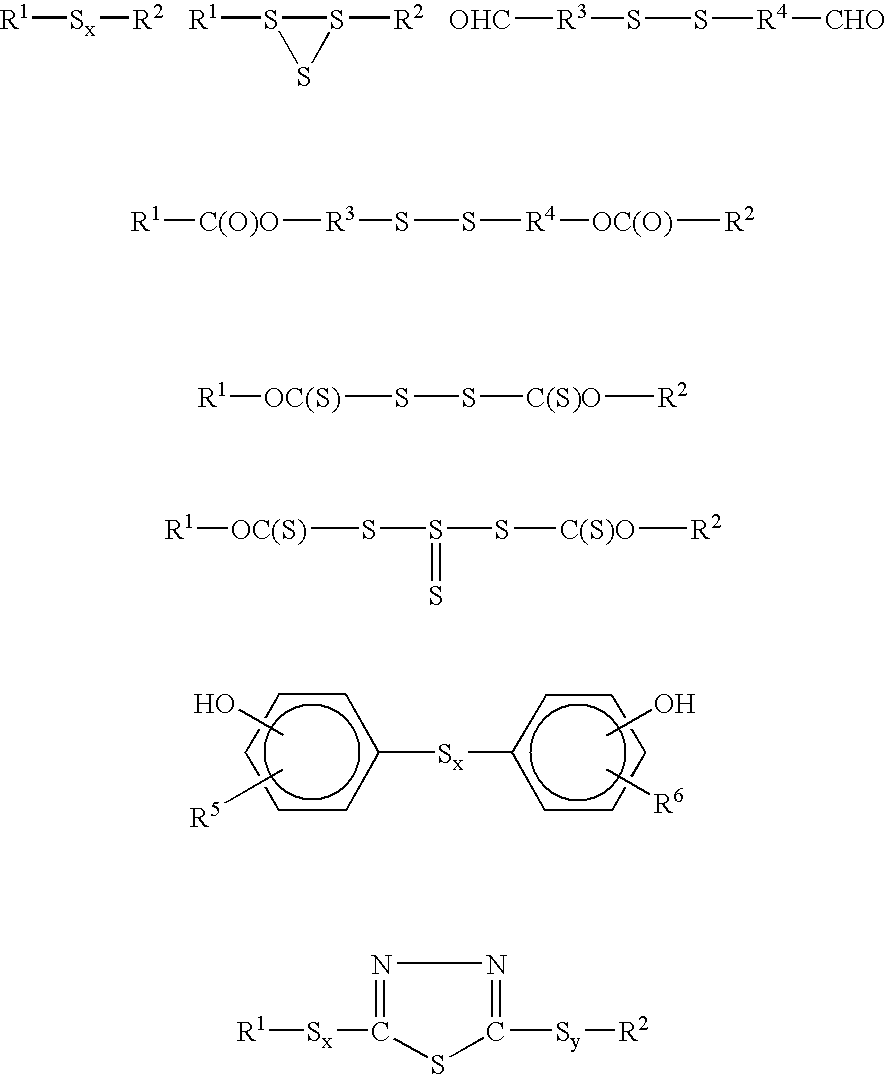Titanium-containing lubricating oil composition
a technology of lubricating oil and titanium, which is applied in the direction of roofs, transportation and packaging, vehicle arrangements, etc., can solve the problems of adverse effects on other characteristics, high cost of molybdenum compounds relative to more conventional friction modifiers, and metal-free (ashless) organic friction modifiers. achieve the effect of improving fuel economy and/or wear characteristics
- Summary
- Abstract
- Description
- Claims
- Application Information
AI Technical Summary
Benefits of technology
Problems solved by technology
Method used
Image
Examples
example 1
Synthesis of Titanium Neodecanoate
[0031] Neodecanoic acid (about 600 grams) was placed into a reaction vessel equipped with a condenser, Dean-Stark trap, thermometer, thermocouple, and a gas inlet. Nitrogen gas was bubbled into the acid. Titanium isopropoxide (about 245 grams) was slowly added to the reaction vessel with vigorous stirring. The reactants were heated to about 140° C. and stirred for one hour. Overheads and condensate from the reaction were collected in the trap. A subatmospheric pressure was applied to the reaction vessel and the reactants were stirred for about an additional two hours until the reaction was complete. Analysis of the product indicated that the product had a kinematic viscosity of about 14.3 cSt at about 100° C. and a titanium content of about 6.4 percent by weight.
example 2
Synthesis of Titanium Oleate
[0032] Oleic acid (about 489 grams) was placed into a reaction vessel equipped with a condenser, Dean-Stark trap, thermometer, thermocouple, and a gas inlet. Nitrogen gas was bubbled into the acid. Titanium isopropoxide (about 122.7 grams) was slowly added to the reaction vessel with vigorous stirring. The reactants were heated to about 140° C. and stirred for one hour. Overheads and condensate from the reaction were collected in the trap. A subatmospheric pressure was applied to the reaction vessel and the reactants were stirred for about an additional two hours until the reaction was complete. Analysis of the product indicated that the product had a kinematic viscosity of about 7.0 cSt at about 100° C. and a titanium content of about 3.8 percent by weight.
[0033] The hydrocarbon soluble titanium compounds of the embodiments described herein are advantageously incorporated into lubricating compositions. Accordingly, the hydrocarbon soluble titanium comp...
example 3
[0073] In order to evaluate the wear reducing effect of a lubricant composition made according to the disclosed embodiments, a Sequence IVA Test Method was used. The Sequence IVA test measures a motor oil's ability to inhibit camshaft wear. Using a Nissan 2.3 L, 3 valve per cylinder, 4 cylinder engine, the crankcase oil under consideration was subjected to 100 hours of continuous engine running, cycling from an 800 rpm idle period to a short 1500 rpm stage, and back again, 100 times, under very precise control of operating conditions. At the end of the test, the camshaft was removed and measured for wear. Each of the 12 camshaft lobes was measured in 7 places, and an average lobe wear was computed for the test. Pass limits for the Sequence IVA Test Method include an average cam wear of 120 mm maximum for API SL and ILSAC GF-3 requirements and 90 mm maximum for API SM and ILSAC GF-4 requirements.
[0074] The base oil was a mixture of Group I and Group II oils having a viscosity grade ...
PUM
 Login to View More
Login to View More Abstract
Description
Claims
Application Information
 Login to View More
Login to View More - R&D
- Intellectual Property
- Life Sciences
- Materials
- Tech Scout
- Unparalleled Data Quality
- Higher Quality Content
- 60% Fewer Hallucinations
Browse by: Latest US Patents, China's latest patents, Technical Efficacy Thesaurus, Application Domain, Technology Topic, Popular Technical Reports.
© 2025 PatSnap. All rights reserved.Legal|Privacy policy|Modern Slavery Act Transparency Statement|Sitemap|About US| Contact US: help@patsnap.com



